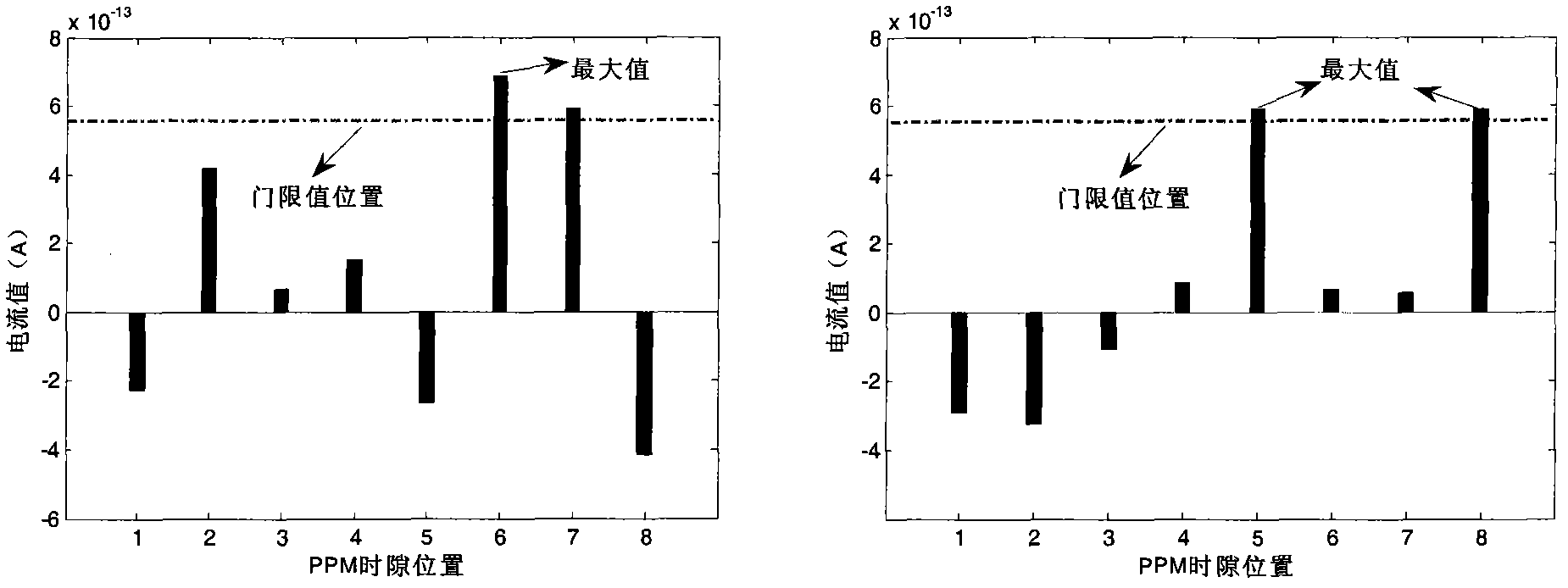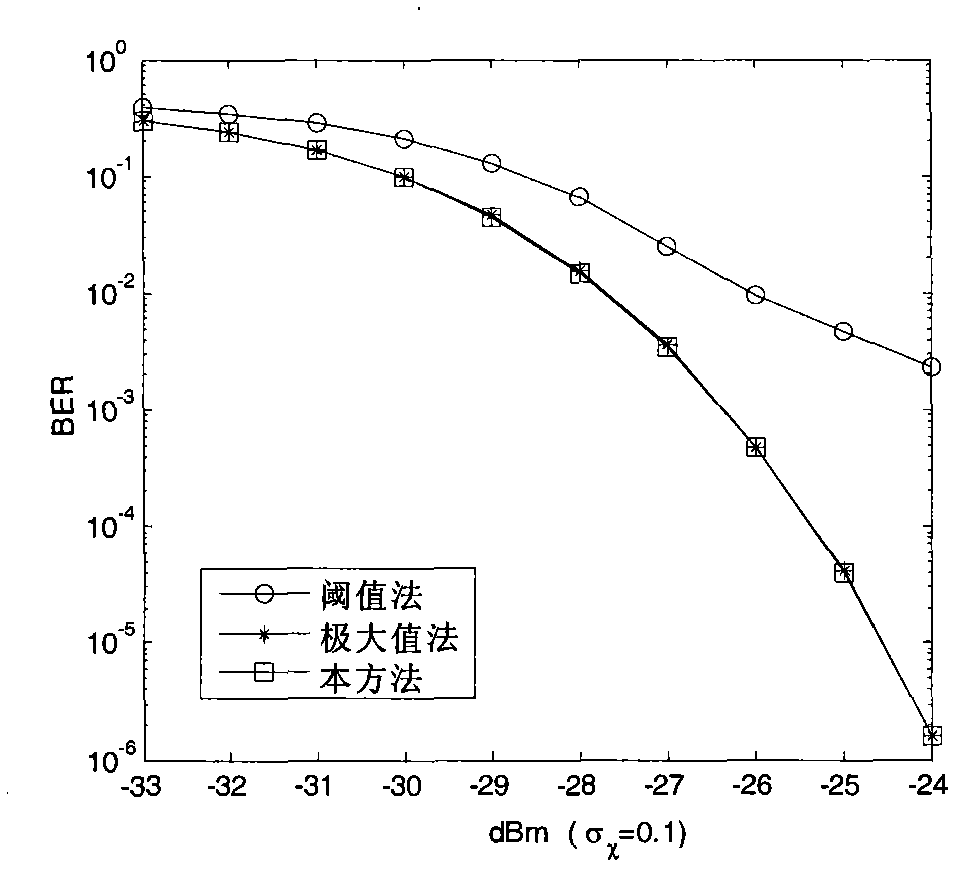Wireless optical communication pulse position modulation detection and demodulation method based on least posterior error probability
A technology of pulse position modulation and error probability, which is applied in the direction of error prevention, electromagnetic wave transmission system, digital transmission system, etc., and can solve the problems that the performance advantages of soft iterative decoding cannot be brought into play
- Summary
- Abstract
- Description
- Claims
- Application Information
AI Technical Summary
Problems solved by technology
Method used
Image
Examples
Embodiment 1
[0030]The wireless optical communication system adopts the PPM modulation mode, and the modulation order M=3. The position of the optical pulse in the symbol after the information bit group is modulated by PPM is shown in Table 1. The modulated signal is transmitted in turbulence and is affected by the noise of the receiving circuit at the receiving end. Therefore, the wireless optical communication channel is a cascade of turbulent atmospheric channel and Gaussian channel. Strong flicker follows a lognormal distribution:
[0031] f ( S ) = 1 2 2 π σ χ S exp { - ( ln S S 0 ...
Embodiment 2
[0050] Under the communication conditions of the first embodiment, channel error correction coding and coding are added to the system to improve system error performance. Among them, add a (63, 51) before PPM modulation at the sending end 2 After PPM detection and demodulation at the receiving end, a soft iterative block decoder is added for decoding, and the decoding iteration takes 3 times. This kind of product code using soft iterative decoding method is also called TPC code, PPM The detection and demodulation methods adopt the present invention, the threshold value detection and demodulation method and the maximum value detection and demodulation method respectively.
[0051] According to the steps in the first embodiment, the received PPM symbols are detected and demodulated, and the obtained likelihood metric values are sent to the TPC code decoder for iterative decoding without being judged. This method combines the error performance curve of the TPC code with the ma...
PUM
 Login to View More
Login to View More Abstract
Description
Claims
Application Information
 Login to View More
Login to View More - R&D
- Intellectual Property
- Life Sciences
- Materials
- Tech Scout
- Unparalleled Data Quality
- Higher Quality Content
- 60% Fewer Hallucinations
Browse by: Latest US Patents, China's latest patents, Technical Efficacy Thesaurus, Application Domain, Technology Topic, Popular Technical Reports.
© 2025 PatSnap. All rights reserved.Legal|Privacy policy|Modern Slavery Act Transparency Statement|Sitemap|About US| Contact US: help@patsnap.com



